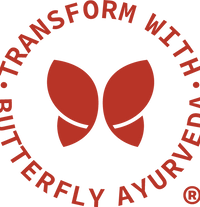
Optimal Health or “Swastha” in Ayurveda is a state of equilibrium of the Doshas, Agni (metabolic fire), function of Dhatus (body tissues), Malas (excretory waste products) along with a cheerful mind, intellect and senses. Any disturbance in this equilibrium due to internal or external factors leads to a diseased state. As Sushruta describes
“SAMDOSHA SAMAGNISCHA SAMDHATU MALKRIYA. PRASANNA AATMA INDRIYA MANA SWASTHA ITI ABHIDHIYATE''
The human mind has three components (triguna) i.e. sattva (pure state of mind), raja (passion/ desire) and tama (inertia/ ignorance), which interact with the biological components vata, pitta & kapha and decide the psychosomatic constitution of an individual (prakriti) at the time of conception.
Ayurveda emphasizes that psychosomatic constitution (Prakriti), which is peculiar to every individual, is responsible for the health or disease pattern in the individual.
The treatment in Ayurveda system is holistic and individualized in nature mainly:-
'Swasthasya Swastha Rakhanam, Aaturachavikarprashmanam cha'
It bears two components i.e. Preventive and Curative.
The preventive aspect of Ayurveda includes personal hygiene, regular exercise, daily & seasonal regime and appropriate social behavior whereas the curative treatment consists of three major constituents, Ahara (diet), Vihara (lifestyle) and Oushadha (medication).
The ideal treatment according to Ayurveda is one, which cures the disease without causing adverse effects. The rational ayurveda treatment is carried out in any or all four components.
1. Dosha pacifying therapy (samsamana),
2. Bio-cleansing therapy (samshodhana or panchakarma)
3. Avoiding causative factors (nidana parivarjana) and
4. Dietetics (pathya vyavastha)

Comments (0)
Back to News